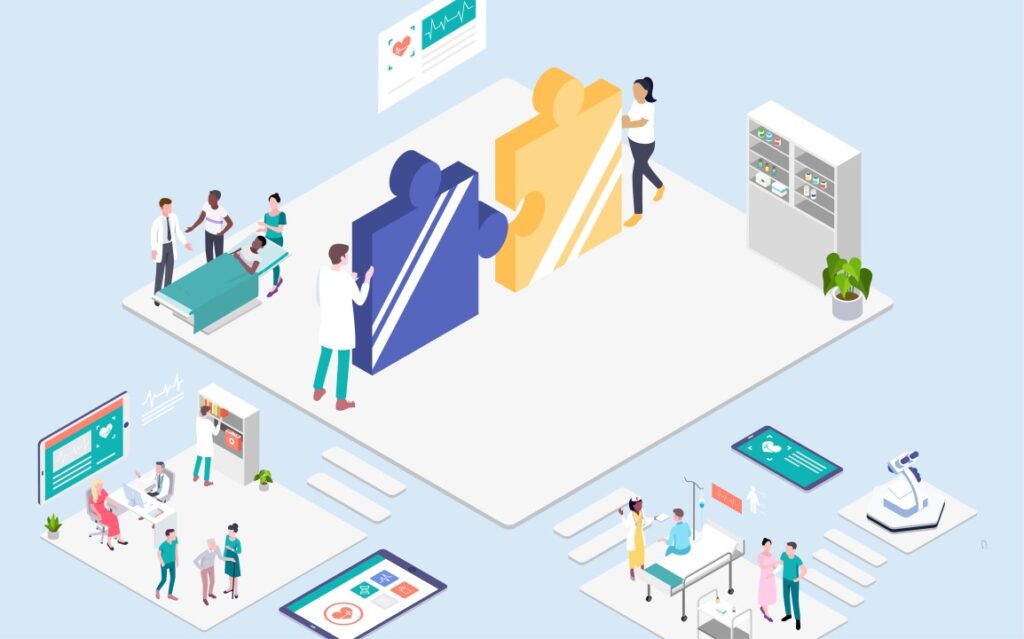Healthcare has come a long way in the last century. Breakthroughs in diagnoses, treatments and cure have improved the quality of life, even increasing the average lifespan – from 52 years for a person born in 1960 to 72 for someone born in 2018 [1]. Driven mainly by innovation, developments in healthcare have not only improved patient care significantly, saving thousands of lives, but also health services by introducing more streamlined processes.
Despite the significant progress across different healthcare spheres, health disparity – gaps in the quality of health and healthcare across racial and socio-economic groups – remains prevalent globally. According to the World Economic Forum report [2], half of the global population still do not have access to essential healthcare primarily due to the relatively high cost and lack of access to healthcare professionals or services. Many existing chronic and debilitating diseases are yet to be understood, and those suffering from them are still hoping for a cure. And as the world evolves, new health conditions will continue to emerge.
The global need for more competent healthcare systems has never been more evident than in the last eight months. The fight against the COVID-19 pandemic has not only revealed weaknesses in healthcare systems but also highlighted the harsh realities of global healthcare inequities.
To close these gaps, healthcare systems do not only need to innovate but do so in the right direction. In this regard, healthcare workers may have the best map.
There is good news. According to the 2019 Global Innovation Index (GII 2019), both developed and developing economies are now prioritizing innovation to achieve social and economic development resulting in an increased focus on the creation and upkeep of sound and dynamic innovation ecosystems and networks. However, innovation in healthcare and its diffusion are often confronted with many challenges which slow down the implementation of solutions that address critical healthcare needs.
One of the main obstacles in healthcare innovation is funding. The GII 2019 report suggested ensuring sufficient medical innovation funding, particularly for public sector research, as key priorities to advancing innovation.
Minimal or uncertain profit incentives and long-term investment returns make it challenging to encourage investors to inject their financial resources into healthcare innovations. While investors in an IT start-up may be able to see a return of their investment in about two years, those who invest in healthcare ventures will likely have to wait several years to find out whether the product will be approved. Furthermore, its market viability may still face obstacles from doctors and other health workers, who are in a position to recommend or reject the product.
Another challenge to healthcare innovation is an unsteady focus in the search for practical healthcare innovations. Many innovations coming out from the sector do not necessarily address existing needs.
While investors have several considerations before funding a project, a product’s potential to address a current or unmet healthcare need can be a firm persuasive tool to get them on board. A clear map of where opportunities lie in the healthcare ecosystem will render innovators a more productive output and help them attract funding.
In this scenario, healthcare workers have a wealth of ideas where challenges and opportunities lie. They are frontline eyewitnesses to some of the most pressing needs and challenges in healthcare systems from care delivery, patient management, safety, process standardization, and more.
In our (WISH’S) 2016 report on global diffusion of healthcare innovation, we found that nine in 10 front-line health workers (FHWs) report having faced a situation in the past year where they wanted to change a way of working and more than half of interviewed individuals report having had an idea that could improve clinical practice and outcomes for patients.
Insight is essential in the innovation process and by engaging healthcare workers, we benefit from their knowledge and extensive experience in caring for people. By closing the communication gap between the “frontline knowledge holders,” i.e. healthcare workers and those who have the spirit and potential to translate that knowledge into life-changing innovations, i.e. the entrepreneurs, we can achieve two goals. Firstly, it will ensure that the new product addresses a real need and secondly, the product stands a higher chance of receiving funding during the developmental stage.



